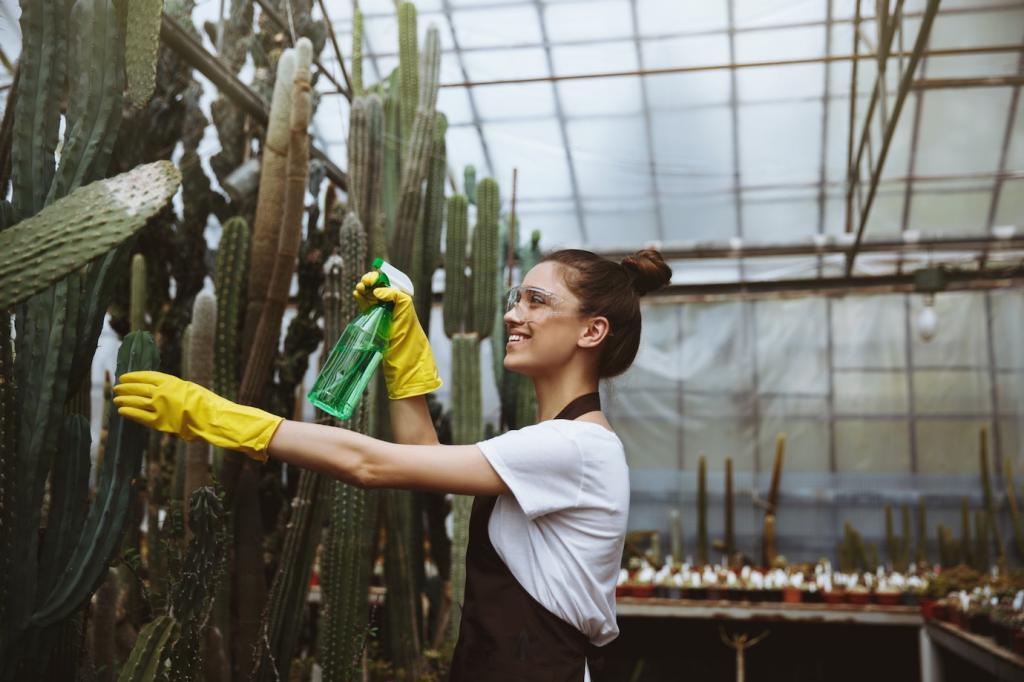Sustainable Upholstery Care Methods: Love Your Furniture, Respect the Planet
Know Your Fabric, Choose the Right Low-Impact Method
01
The little letters on upholstery tags guide eco-friendly decisions: W means water-based cleaning, S means solvent-only, WS accepts either, and X requires vacuuming and professional care. Understanding these codes helps you avoid waste, prevent damage, and clean only as much as needed.
02
Always test any cleaner—homemade or store-bought—on a hidden spot and wait a full day. A small, patient patch-test reduces irreversible mistakes, color loss, and fiber stress, saving resources and sparing you the heartbreak of a visible cleaning ring.
03
A weekly HEPA vacuum with a soft brush prevents dust from embedding, so deep cleans are rare. Sustainable care is routine, not heroic: light, regular maintenance extends fabric life, reduces chemical use, and keeps colors and textures feeling like new. Share your routine wins with us.
Low-Impact Stain Strategies That Actually Work
For coffee, tea, or juice on W or WS fabrics, blot gently—never rub—with an absorbent cloth. Then use distilled water and a drop of mild castile soap. Work from the outside inward, blot again, and air-dry. Distilled water helps prevent rings and reduces re-cleaning.

Tools and Supplies for Greener Cleaning
Choose glass or metal spray bottles, a wooden-handled upholstery brush, and a HEPA vacuum with replaceable parts. Use robust, washable cloths—organic cotton or microfiber laundered in a microfilter wash bag to reduce fiber shedding. Label everything, and keep it tidy to avoid duplicates.
Tools and Supplies for Greener Cleaning
Distilled or well-filtered water helps prevent mineral rings that cause extra cleaning cycles. Fill bottles only with what you will use this month, and store them away from sunlight. Fewer cleaning repeats mean less energy, less water, and gentler wear on beloved textiles.





Repair, Refresh, and Reupholster Before Replacing
Invisible Mends and Thoughtful Patches
Tiny tears grow quickly. Stabilize edges with a few hand stitches, or back the area with a thin, color-matched patch. A curved needle helps on tight corners. One reader rescued an heirloom chair this way, saving the original fabric and honoring decades of family gatherings.
Comfort Without the Footprint
Before discarding saggy cushions, consider restuffing with durable options like natural latex cores, wool batting, kapok, or recycled polyester fill. Local upholsterers can refresh support and reshape corners neatly. Extending the life of existing frames dramatically reduces resource demand compared to buying new furniture.
Steam, Brush, and Revive the Nap
For fabrics that tolerate moisture, a light pass with a garment steamer and an upholstery brush can lift flattened pile. Keep the steamer at a distance, move slowly, and test first. This gentle refresh can make a tired armrest look lively again without harsh chemicals or dyes.
Healthier Chemistry and Cleaner Indoor Air
Look for clear third-party standards, such as Green Seal, ECOLOGO, or the EU Ecolabel, and pick fragrance-free options when possible. Ventilate during and after cleaning. These simple choices help reduce unnecessary irritants while keeping fabrics fresh enough for everyday living and relaxing.
Healthier Chemistry and Cleaner Indoor Air
Mix 500 ml distilled water with one teaspoon mild castile soap in a labeled bottle. Lightly mist, then blot—never soak. This gentle solution works best for small spots on W or WS fabrics. Always test first and let air do the drying, not high heat.


